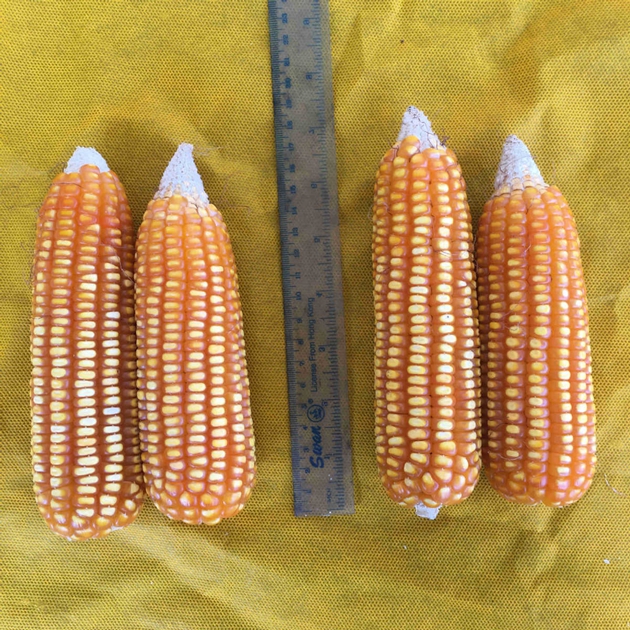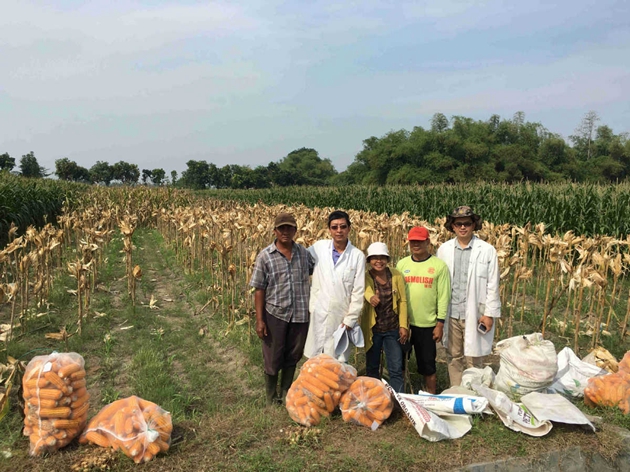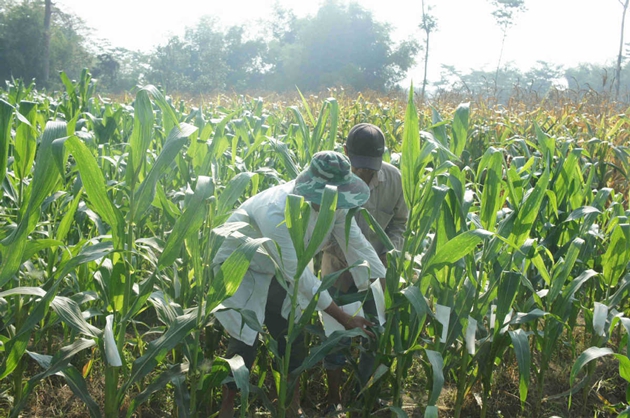With Chinese help, new corn sprouts in Indonesia
By Zhao Ruixue in Jinan| (chinadaily.com.cn)| Updated : 2021-03-18
Print Print
IDCHN07 is one of the four corn seed varieties newly developed in Indonesia with help from Chinese experts. [Photo provided to chinadaily.com.cn]
Four varieties of corn — also known as maize — developed in Indonesia with help from Chinese experts passed an assessment by a commission of the Ministry of Agriculture of Indonesia. It means the varieties of seeds will be available in the Indonesian market, according to Maize Research Institute of the Shandong Academy of Agricultural Sciences.
"The newly developed seeds are highly resistant to downy mildew, a disease widely seen on corn in Indonesia," said Ding Zhaohua, a researcher at the institution and one of the team members who worked on developing the seeds.
The assessment found that the average production on each 0.07 hectares (one mu) of field planting IDCHN07, one of the four corn seed varieties newly developed, is a little over 793 kilograms, 8.3 percent more than the current seed variety in wide use in Indonesia. "Mu" is a unit of land measurement often used in agricultural research in China.
"The experiments have been carried out in several regions of Indonesia with the highest yield reaching 914.51 kilograms per mu," Ding said.
Corn is the second-most important grain for Indonesians after rice. Demand in the country continues to increase, causing the Indonesian government to prioritize production.
As a part of the international technology cooperation between the two countries, experts have been working on developing new corn varieties for more than a decade.
Names of the four varieties all contain the designation IDCHN to commemorate the cooperative achievement between the two countries, Ding said.

A harvest from an experimental farm in Indonesia that uses the newly developed corn seeds. [Photo provided to chinadaily.com.cn]
"The newly-developed corn seeds, which are able to substantially raise yields, are recognized and highly praised by local experts and farmers," Ding said.
The seeds can also be used in southwestern China, he said, adding that talks are underway with several seed companies in China.
"The seeds developed in Indonesia have enriched our seed bank, laying a foundation for us to develop more new seeds," Ding said.
Ding and his partners once tried to introduce seeds from China to Indonesia, but they found the seeds performed poorly there. They built a base in Indonesia to cultivate new seeds and finally found success.
Experts cultivated hundreds of seed components to create a hybrid. They selected 10 hybrids for experiments, four of which passed the national assessment.
"It's not easy to develop a new variety of seed in a country that has a lot of rain. We needed to figure out what kind of seeds are adaptable to the weather," Ding said.
"It frequently happened that when we were ready for planting, it suddenly rained, making the soil sticky and unsuitable for planting. Planting techniques will also influence the yield," he added.
The planting methods for the newly developed seeds are different from the traditional approach of by Indonesian farmers, Ding said.
"Two or three seeds are planted in one hole because the seedlings are easily damaged by downy mildew. The newly developed seeds are resistant to that, so we only need to put one seed in one hole, making work more efficient."

Researchers do their work at the experimental base in Indonesia. [Photo provided to chinadaily.com.cn]

 2024 Shandong Rural Cultural and Tourism Festival
2024 Shandong Rural Cultural and Tourism Festival  Celebrate Spring Festival in Zibo
Celebrate Spring Festival in Zibo  Share your views on 2024 China's govt work report
Share your views on 2024 China's govt work report